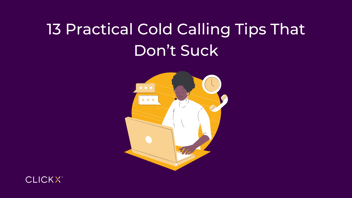The Definitive Guide to Cold Calling for Marketing Agencies
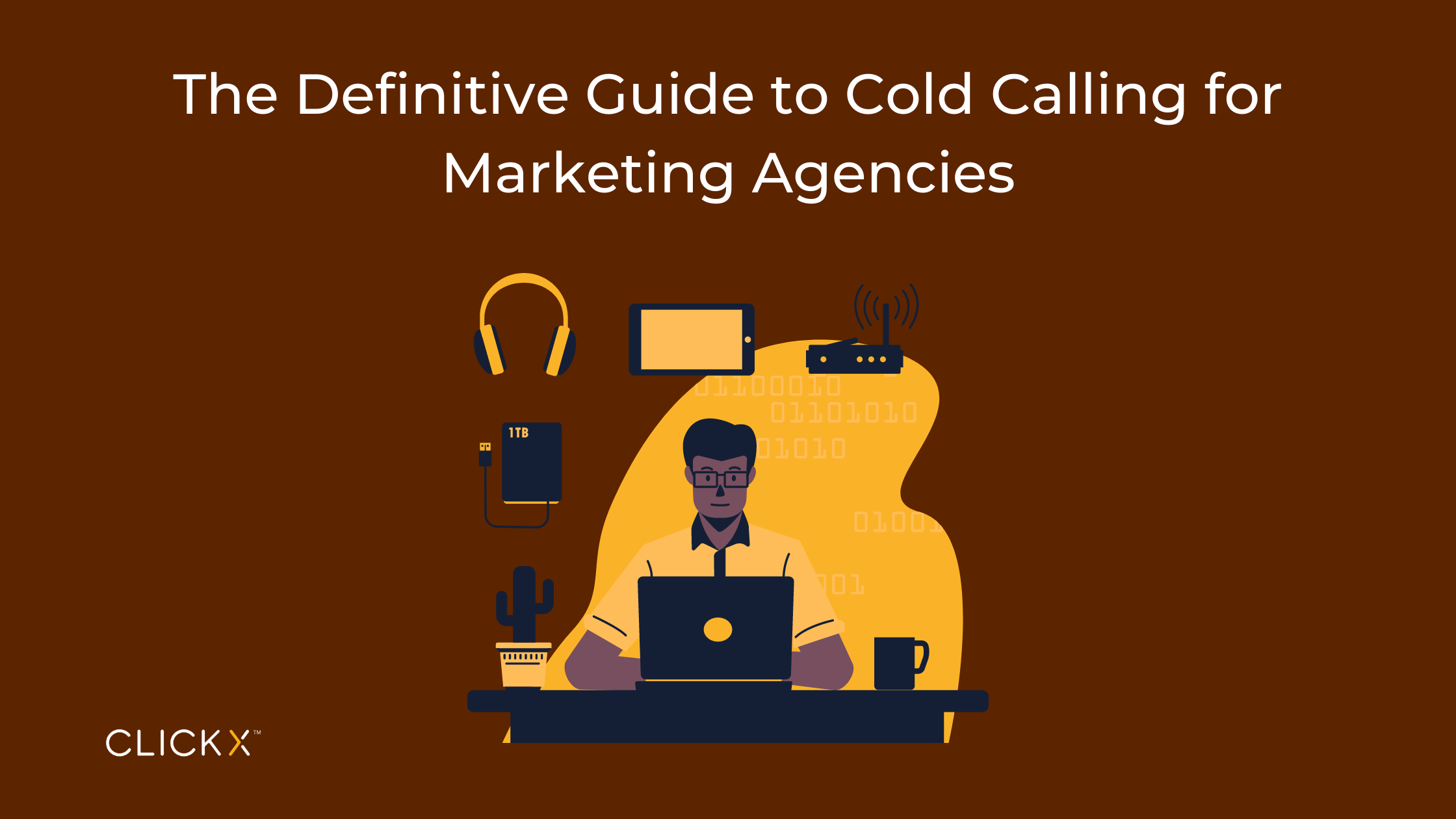
Cold calling is the bane of some people’s existence and a necessary evil for others.
Whether you think it’s despicable or necessary, cold calling is still very much a thing in the business world; and for marketing agencies, it’s not going anywhere anytime soon.
Still, many agency owners would rather jump off a cliff than make a cold call.
If that’s you, then this guide is for you.
We’ll cover what cold calling is and isn’t, the benefits and risks of cold calling, and specific strategies you can use in your agency to make cold calling a little less cold.
Let’s start with the basics:
What Does Cold Calling Look Like in 2022?
A few decades ago, cold calling was a pretty linear process.
You’d open your phone book, look for a company you want to work with, and just call them.
This, of course, is a massive oversimplification but gives you a general idea of what cold calling looked like in the past.
Nowadays, it’s a bit more complicated.
First, physical phone books are obsolete.
Second, the process has become much more digital, and cold calling is now a mixture of phone calls, emails, direct messages on social media platforms, and text.
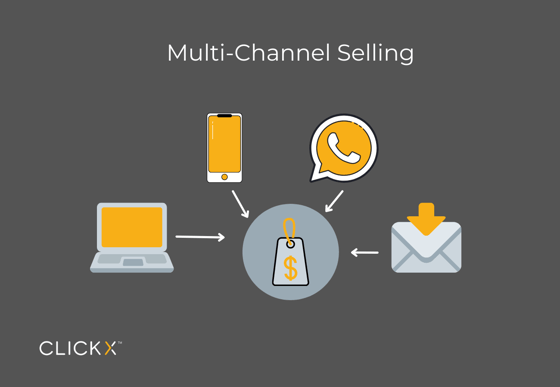
Thus, cold calling is no longer a phone thing, but a multi-channel strategy. And it starts well before you call the prospect.
We’ll get into the steps you need to take before “cold calling” in a little bit. But first, let’s talk about why it’s still necessary for 2022.
Why Cold Calling Still Matters for Modern Agencies
First, let’s talk about why cold calling is still around.
Some of the reasons include:
- Bypass gatekeepers: Before the rise of digital communication, getting in touch with a business required charming or stumping an assistant or secretary. Now, with social media and email, anyone in the company can be reached.
- Conversation starter: Cold calling is a great way to start a conversation with a potential partner. This is especially helpful when the business you’re calling isn’t necessarily a good fit for your agency at that time.
- Feed the pipeline: Cold calling can help you find new business opportunities, but it can also help you build relationships with existing accounts. It’s not necessarily about getting the business; rather, it’s about staying top-of-mind, so when the agency is ready to expand, your business will be one of the first to consider.
- Get traction quickly: Cold calling is an easy way to get in front of a lot of potential customers quickly. This allows you to test your messaging and see what resonates with the market.
Common Pitfalls You Should Avoid When Cold Calling
Before we get into specific strategies, let’s talk about some of the pitfalls you’ll want to avoid:
1. Calling Your Prospects Unprepared
Don’t show up to a cold call without knowing a little bit about the company.
If you’re calling a business you know nothing about, at least look them up online. Grab their website address or phone number so you can search for them later. This will help you sound more prepared.
But research should go beyond the company’s website.
Use social media to see if you can find anything interesting about their brand.
For example, you might search for the company’s name on Twitter and see if any employees are talking about it. This can give you an insight into their culture and help you better approach the conversation.

You can also search their name on Facebook to see if any of their clients are posting about them. This can help you better understand the company, and help you find the right person to talk to during your cold call.
Calling your prospects unprepared is not only disrespectful. It’s also unprofessional.
When you do your homework, you build trust and respect with your potential client.
2. Making Your Own Agenda the Priority
Remember, you’re not calling to sell anything yet. You’re simply trying to start a conversation.
This means your agenda shouldn’t be to push your solution. Instead, you should ask questions and get the person on the other end talking.
Let them tell you what they’re looking for.
Don’t try to guess or assume anything.
It’s your job to manage their expectations and set the tone for the conversation.
Many sales reps make the mistake of trying to get the client to agree with them. They use language like “don’t you find it’s better when…?” or “don’t you think that…?”
This language is pushy and it puts the client on defense.
This person doesn’t know you.
They don’t owe you anything, so they’ll be more likely to listen if they feel like it’s their idea.
Use language like “how do you feel about…” or “what’s your opinion towards…?”
This will make prospective clients more receptive to hearing what you have to say.
3. Not Getting the Right Person on the Phone
Getting agreement doesn’t necessarily mean you need to get buy-in. It’s all about getting the right person on the phone.
For example, say you’re calling a business looking to help them with their social media.
If you’re talking to the person who handles marketing or PR, then that’s great. However, if you’re talking to someone in operations or HR, then you’re probably getting off topic.
It’s important to get the right person on the phone so they can help you find what you’re looking for. If you don’t, it can lead to frustration for both parties.
4. Not Following Up
This is a huge mistake.
Following up is one of the most important parts of cold calling.
A lot of companies get hung up on the fact that they didn’t get a sale. This is shortsighted thinking.
A contact is better than no contact.
Just because you didn’t get a sale on the first call doesn’t mean somebody isn’t going to listen to what you have to say on the second call.
Your first goal should be to set up a future meeting or conversation with a decision-maker. If they agree, then great. If not, schedule a follow-up call and try to get on their calendar again.
After all, this isn’t about an immediate sale.
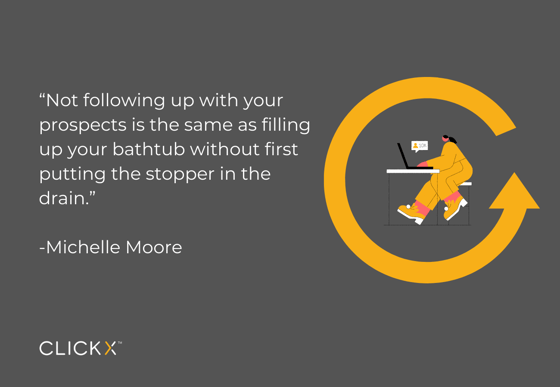
It’s about the long-term relationship you’re building.
5. Not Using a Connection To Get the Ball Rolling
Don’t rely on cold calling alone.
It’s important to leverage your network, as well.
For example, if you have a friend who works at the company you’re trying to reach out to, that’s a huge opportunity. Ask them to make a quick introduction over email, and you’re already halfway there.
This is a simple way to get started.
Cold Calling Best Practices for Modern Agency Owners
Now that you know what not to do, let’s talk about some best practices for cold calling.
1. Start With the End in Mind
If you’re cold calling, there’s obviously something you’re trying to accomplish.
Rather than making the call with no plan in mind, take some time to brainstorm.
What’s the end-game here?
What does success look like for you?
Think about what you’re trying to get out of the call before you make it.
Do you want to schedule an appointment? Or simply want to make the first contact?
Do you want to get an introduction?
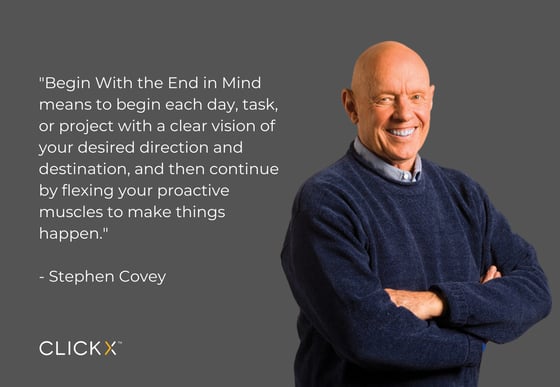
Identifying your objective will allow you to prepare for the conversation. Thus, it would be a lot easier to accomplish exactly what you’re trying to do.
2. Acknowledge the Awkwardness of Cold Calling
All too often, people try to pretend their cold call isn’t a cold call.
It’s the elephant in the room.
This approach doesn’t work because it makes everything awkward.
For example, say you’re calling an agency looking to help them with their social media presence. You could say something like, “Hey, sorry to bother you. I hope I’m not interrupting anything.”
This is a polite way of calling attention to the fact that you’re cold calling. It also makes the person on the other end of the line more receptive to what you have to say.
Or at the very least, they won’t slam the phone on you.
The point is, there’s no need to make an already uncomfortable situation even more uncomfortable.
3. Adjust Your Approach Depending on the Person’s Level of Experience
People in leadership roles are going to have a lot more responsibilities.
They’re also going to have less time.
You should approach them with an idea rather than a problem. This will make them more open to working with you.
Don’t start with, “We’ve seen your website, and I think you really need to make some changes.”
Instead, try saying something like, “I have a new idea that I think would benefit you and your company.”
Of course, this doesn’t mean you should pitch them and hope they bite. You still want to identify the problem before offering your solution.
For instance, if you’re cold calling a small business looking to revamp their paid ads, you might say something like, “We’ve been seeing a lot of your competitors doing a great job on Facebook Ads.”
This is a classic example of problem-based cold calling.
You hit the nail on the head by identifying what you think it is they need to fix.
What’s more, this gives them an opportunity to tell you where they think you can improve, too.
4. Keep It Short
You’ve probably heard the saying, “time is money.”
Well, it’s true.
Your time is valuable and so is the other person’s.
Don’t waste it by talking over somebody or monopolizing the conversation.
Keep things short and sweet, and you’ll be much more likely to accomplish what you’re trying to do.
Also, keep in mind that the other person might have a lot going on.
They might be in a rush, or they may not feel like talking to you.
If this is the case, it doesn’t hurt to ask if they have some time to chat. Just be sure to ask in a polite tone.
If they’re in a rush, you can always try calling them back later in the day when they might be more available.
5. Don’t Use Stupid Opening Lines
Cold calling is already uncomfortable enough as it is.
It doesn’t make things any easier if you start with cliches like, “Do you have a minute to talk about the future of your business?”
Another one that’s equally bad is, “Did you know you can grow your business?.”
It doesn’t need to be this way, though.
There are plenty of ways you can start a conversation without being so direct.
You could say something like, ” I have a quick question for you.”
This gives the other person an opportunity to decide if they want to talk to you.
And if they say yes, you can always follow up by asking if now is a good time.
The point is; don’t be weird.
Don’t use phrases or lines you wouldn’t use in any other context.
You don’t want to be labeled as the weird telemarketer who keeps bothering people. It’s just uncomfortable for everybody.
6. Record and Study Your Calls
This may seem like an obvious tip, but it’s something people don’t do nearly as often as they should.
When you record and study your calls, you’re able to identify what works and what doesn’t. This helps you fine-tune your approach in the future.
You’ll know what to say, how to say it, and when to say it.
Keeping track of your calls also gives you something to look back on and reference.
Some people even keep a journal of their cold calls.
They write down the results, what they did right, and what they could have done better.
This is a good way to stay motivated and accountable.
The Bottom Line?
Cold calling is a necessary evil.
It’s not easy.
It’s not comfortable, either.
And you’re probably not going to get a positive response on your first few attempts.
That’s okay.
Keep trying, keep learning, and it’ll get easier. Eventually, you’ll find a way to make it work for you and your agency.
Keep these tips in mind, and you should be well on your way.
Remember; the goal isn’t getting it all perfect, but getting it done.


